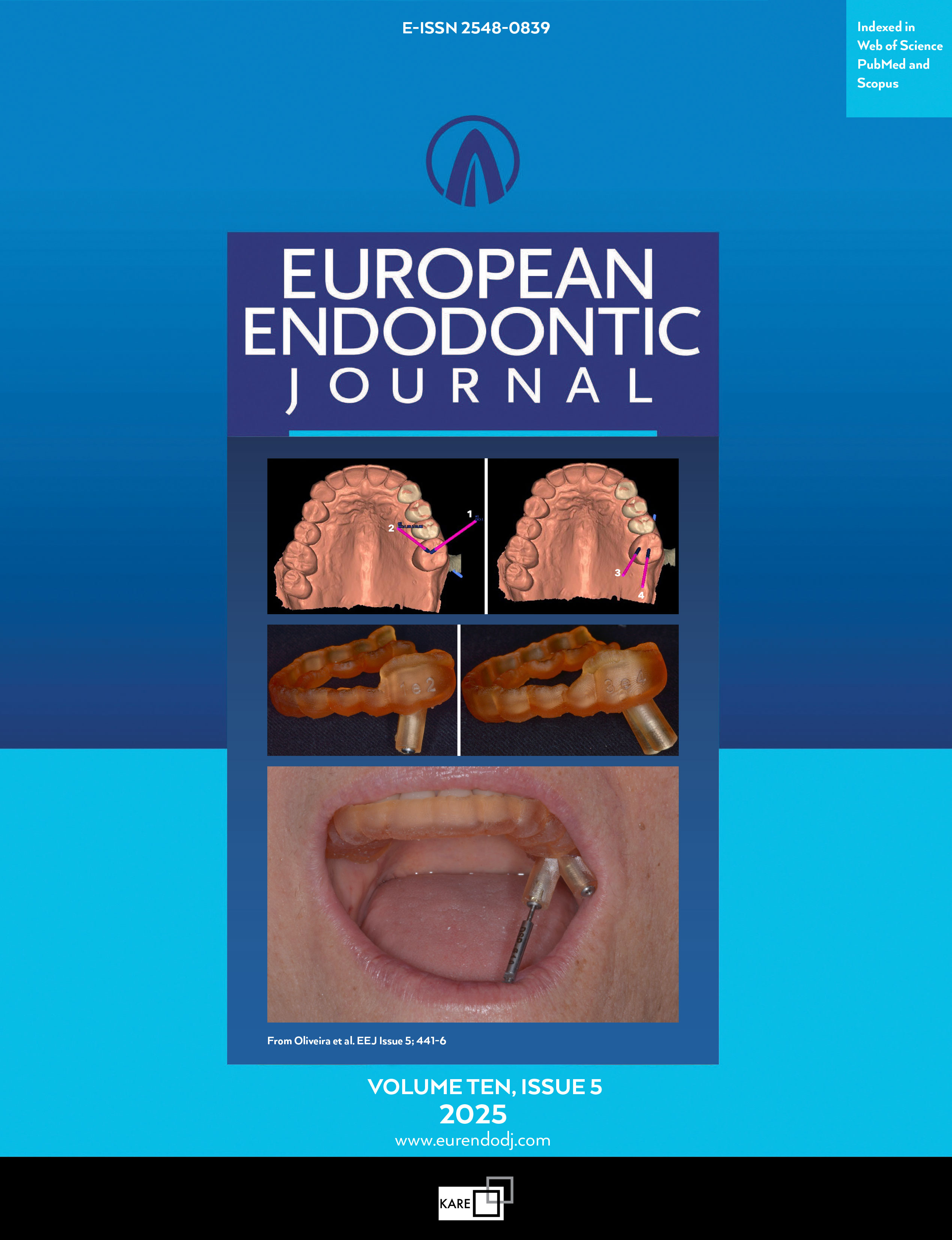Metrics
2024 IMPACT FACTOR
5 year Impact Factor
Eigenfactor Score
2024 CiteScore
Journal Citation Reports
(Clarivate 2025, JIF Rank)
Impact of Different Nickel-titanium Instruments on Apical Micro-cracks Formation and Residual Amount of Root Canal Filling Materials Following Retreatment Procedure
Ahmed Witwit, Maha Albazzaz, Baydaa ZidaneDepartment of Operative Dentistry, College of Dentistry, Mustansiriyah University, Baghdad, IraqObjective: This study aimed to evaluate and compare the dentinal defects caused by three different retreat-ment systems [Endostar RE Endo, XP-endo Retreatment, and MANI Gutta-Percha Removal (GPR)] and to assess the percentage of residual root canal filling material following the retreatment procedure.
Methods: Sixty extracted mandibular second premolars with straight oval canals were used. The roots were standardized to a length of 14 mm. All samples were instrumented with NiTi instruments up to size 30.04, then filled using single cone technique with AH plus sealer and gutta-percha. Four groups were created from the samples. Group 1 served as the negative control (n=15), while the remaining three groups (n=15 each) were categorized based on the retreatment system used. Stereomicroscope at magnification 45 x was used to evaluate the incidence of crack formation and propagation at apex of the roots and the residual volume percentage of root filling materials in groups of Endostar RE, MANI GPR, Xp retreatment systems assessed using CBCT. Fishers exact test was used to analyze the incidence and propagation of cracks, while one-way ANOVA and Tukeys post hoc test were applied to assess differences in residual filling material volume among the groups P values at 0.05.
Results: There is significance difference (p=0.028) between the Endostar and Xp retreatment system. The highest of dentinal defect (10\15) with Endostar retreatment system followed by (4\15) with GPR system and (2\15) with XP endo retreatment system.Highest residual filling material mean at Endostar RE retreatment system (51.97) and lowest mean (39.07) at Xp retreatment system A statistically significant difference was observed between the groups (p<0.001), particularly between the Endostar and XP retreatment systems.
Conclusion: No system was capable of completely eliminating obturated materials. The XP-endo Retreat-ment system showed the lowest incidence of crack formation and propagation and proved to be the most effective in removing gutta-percha and sealer.
Manuscript Language: English
(153 downloaded)


